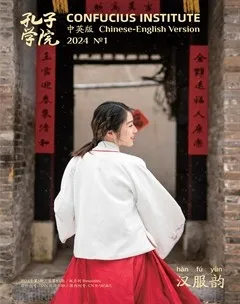山东青州龙兴寺遗址出土窖藏佛教造像赏析 Buddhist Sculptures from Longxing Temple in Qingzhou
2024-03-04李柏华LiBaihua
李柏华 Li Baihua
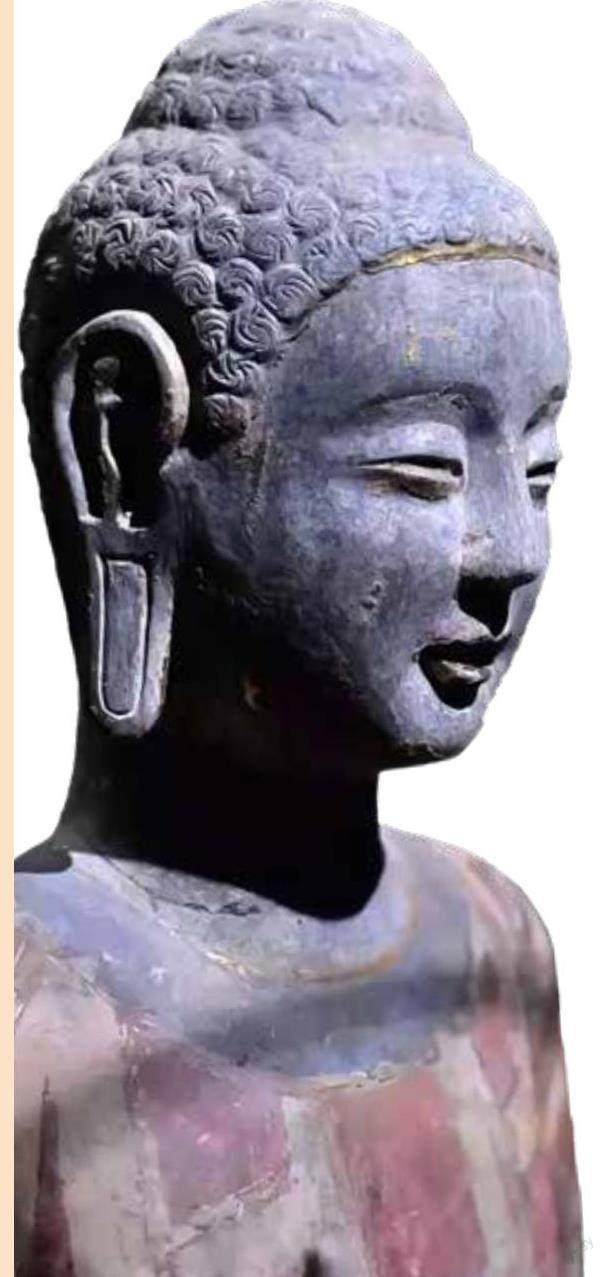
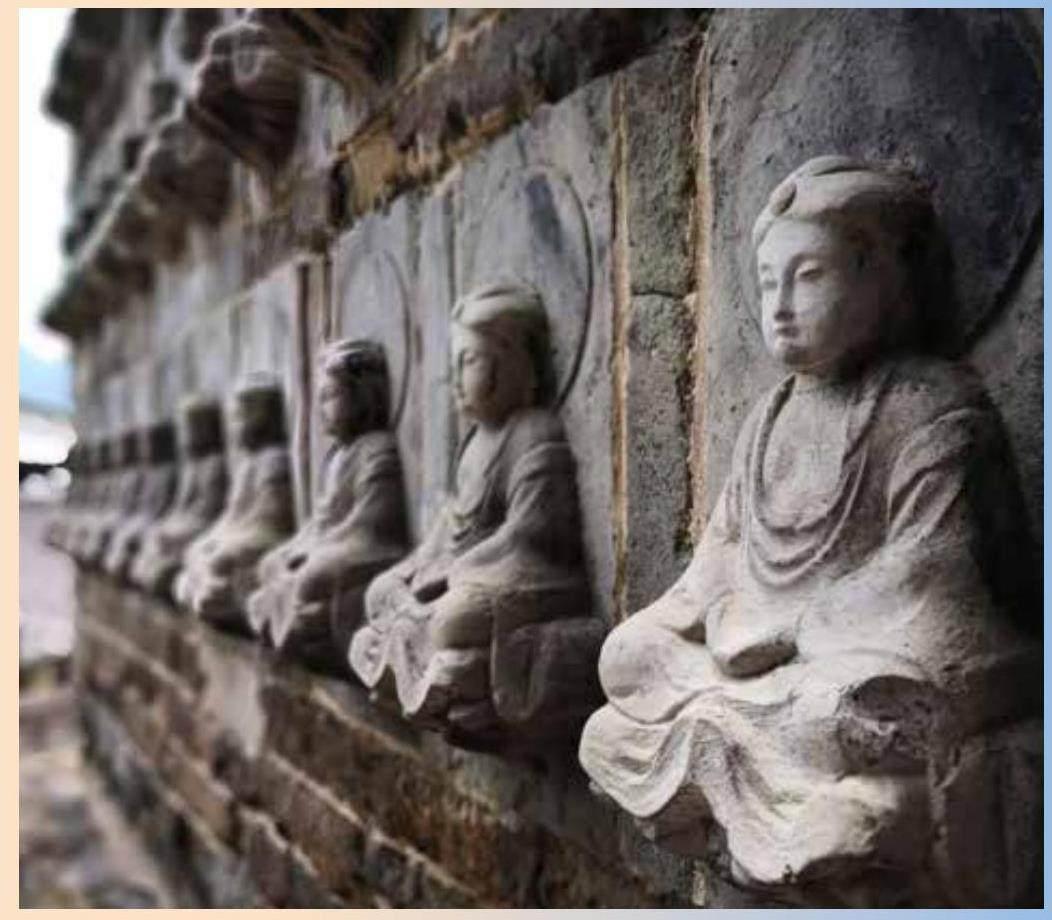
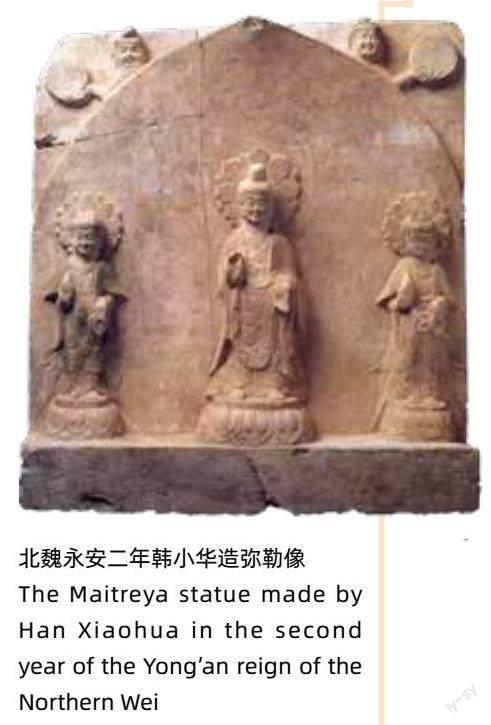
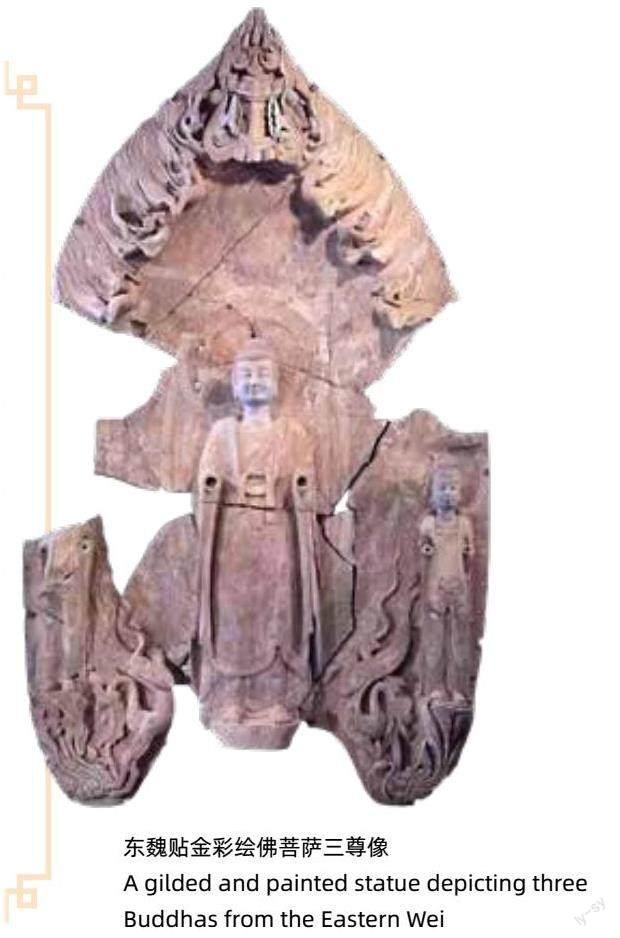
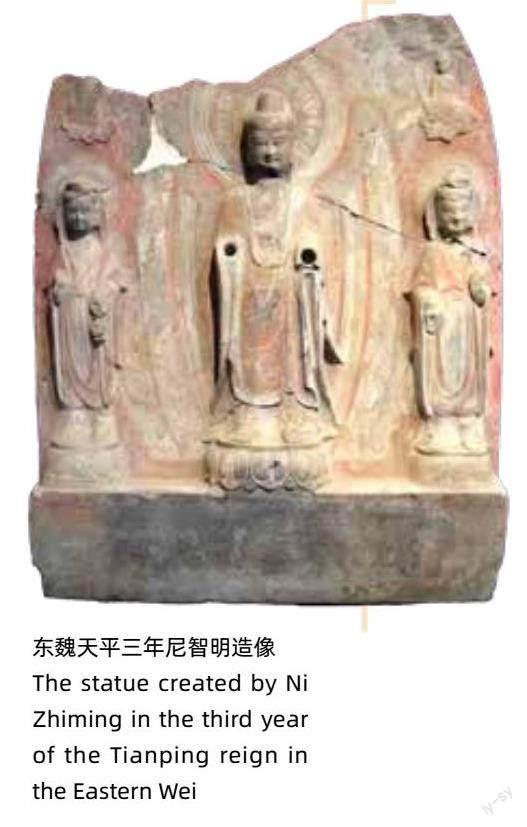
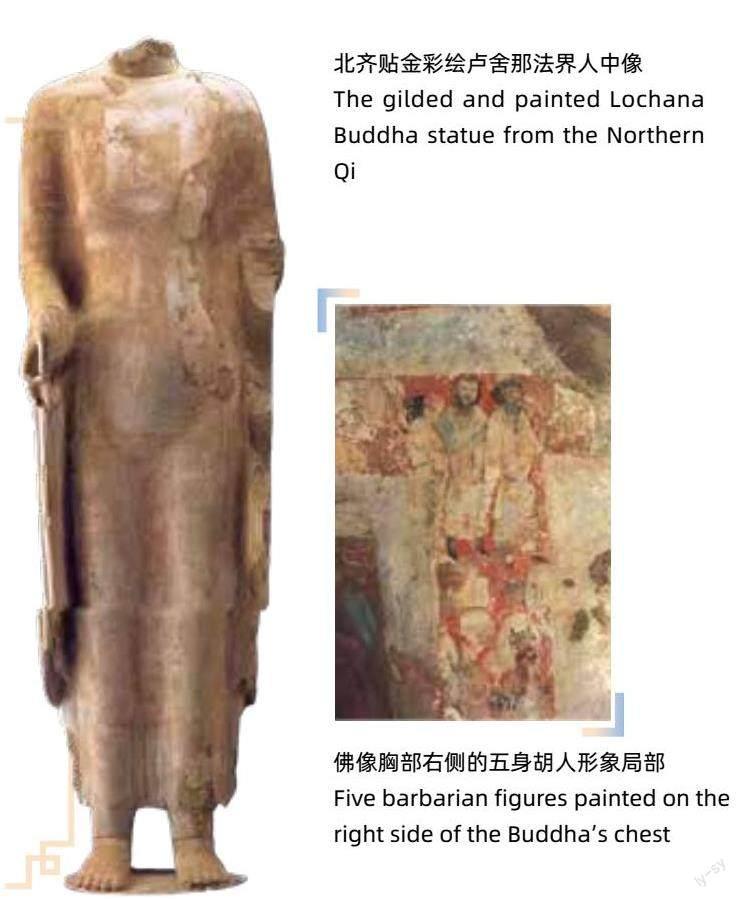
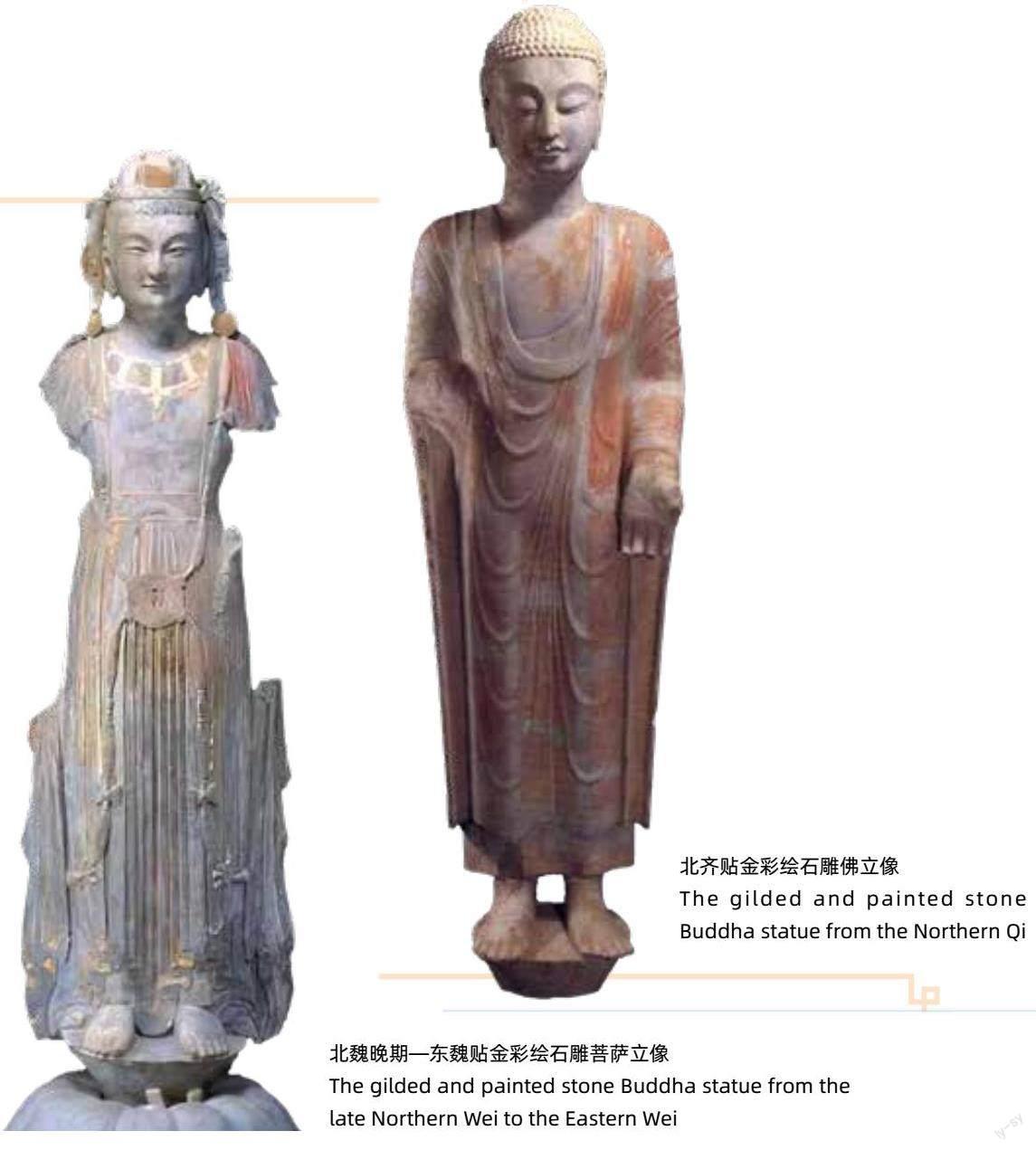
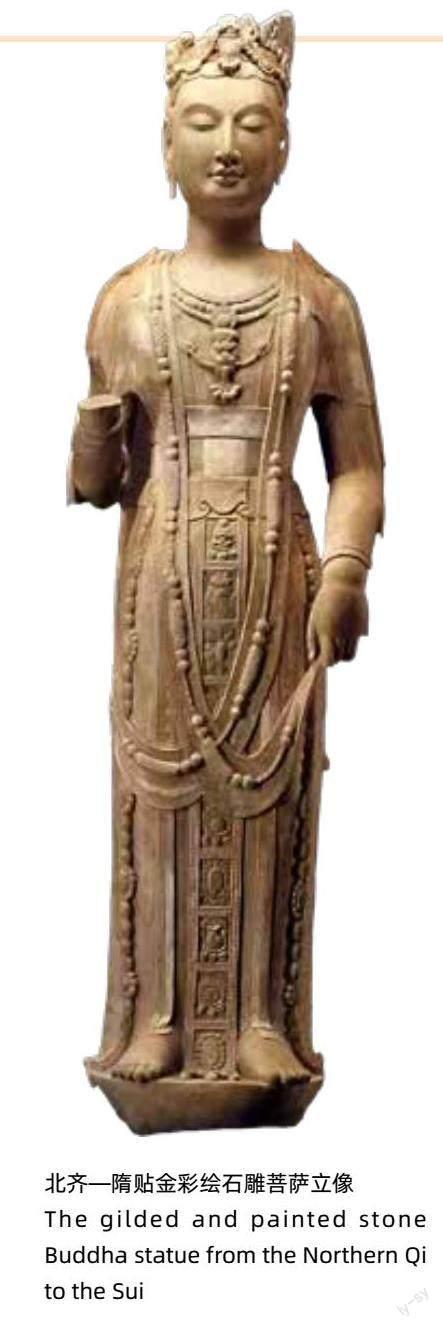
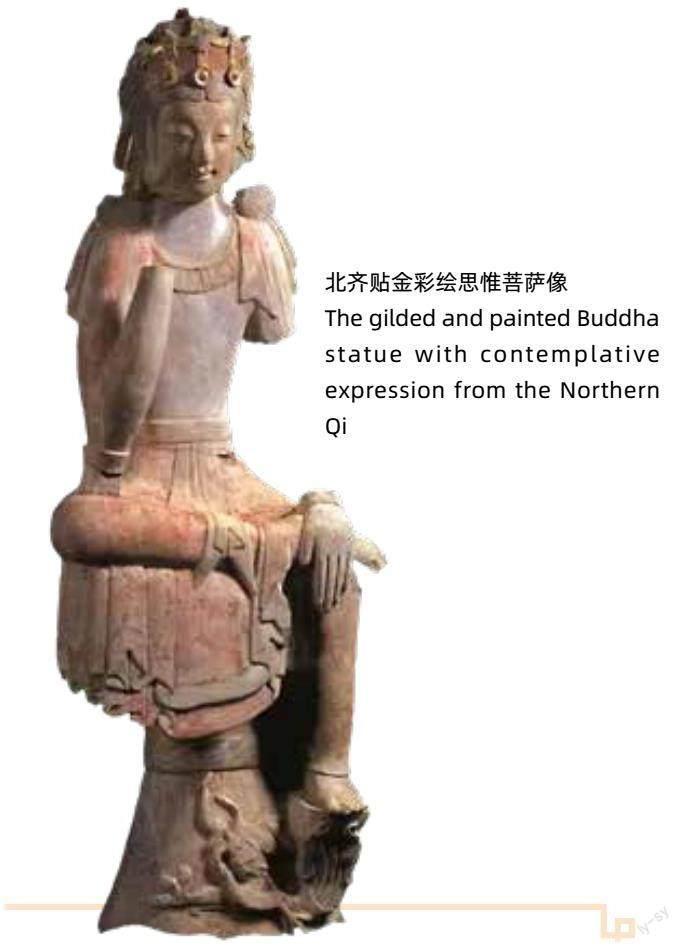
中國的长江、黄河流域和印度的印度河、恒河流域,同属世界古代文明的发源地。中印文化异地共生、交相辉映,同为人类文化的瑰宝,共同谱写了人类历史绚丽多彩的篇章。
China’s Yangtze River and Yellow Riverbasins, along with India’s Indus River andGanges River basins, are both cradles of ancientcivilizations. The coexistence and interaction ofChinese and Indian cultures, both consideredtreasures of human civilization, have contributedto a vibrant and diverse chapter in human history.
印度是中国的近邻,与中国有着深厚悠久的友谊。中国引进并吸收了以佛教为标志的印度文化,使之成为中国文化的重要组成部分,在社会的不同领域与各个层次都留下了深刻的烙印。直到今天,印度艺术,特别是佛教艺术的犍陀罗与笈多式佛像,对中国的文化艺术仍产生着重大影响。
India, as a neighboring nation, shares a deepand longstanding friendship with China. Chinahas warmly embraced Indian culture, notablyBuddhism, which has become an integral partof the Chinese heritage and left a lasting impactacross various facets of society. Even today,Indian art, especially Buddhist sculptures in theGandhara and Gupta styles, continues to wieldsignificant influence on Chinese cultural andartistic expressions.
中国,古称“九州”;青州为九州之一。明代以前,青州一直是山东的政治和文化中心。青州历史悠久,佛教文化盛行,除龙兴寺遗址出土的窖藏精美佛教造像外,还有云门山石窟和陀山石窟等造像遗存,闻名遐迩。
China, historically referred to as the “NineProvinces,” included Qingzhou as one of itsprovinces. Qingzhou served as a political and cultural center in Shandong prior to the MingDynasty. With its rich history, it stood as a thrivinghub of Buddhist culture. Apart from the Buddhistartifacts unearthed from the Longxing Temple, onecan also find exquisite Buddhist statues from YunmenMountain Grottoes and Tuoshan Grottoes, whichhave gained recognition far and wide.
1996年10月,在益都师范学校整平操场过程中,施工人员无意中发现了一些造像残块,就此开始抢救性挖掘。这一地块是历史上著名的佛教寺院——龙兴寺的遗址,发现的这处大型佛教造像窖藏,东西长8.7米,南北宽6.8米,偏东部有一南北向斜坡道直达窖底。造像在窖藏内分三层排列,沿壁有部分立像。
In October 1996, as construction workersleveled the sports field at Yidu Normal School, theystumbled upon some statue fragments. This discoveryprompted an urgent archaeological excavation,revealing the historical site of Longxing Temple,a Buddhist temple of historic renown. The largeBuddhist statue pit unearthed measures 8.7 metersin length from east to west and 6.8 meters in widthfrom north to south. An inclined pathway in theeastern section leads directly to the bottom of the pit.The statues within the pitare arranged in three tiers,with freestanding statuespositioned along the walls.
出土的造像主要为汉白玉、花岗岩、石灰石等石造像,另有一些陶造像、铁造像、泥塑像和木质像,其雕刻手法多样,有平雕、透雕、圆雕、高浮雕等,各种技法都极为精湛。这批造像的年代跨越北魏至北宋500多年,经抢救清理出各类造像约400尊(多为南北朝时的造像),以大件造像为主,最大的达到3.2米高,为北魏时期所造。
The unearthed sculptures are predominantlycrafted from white jade, granite, and limestone,though pottery, iron, clay, and wood are also used.They showcase a wide range of carving techniques,including flat relief, openwork carving, roundcarving, and high relief, all executed with remarkableskills. These sculptures span over 500 years, datingfrom the Northern Wei to the Northern Song, witharound 400 statues from the Northern and SouthernDynasties unearthed through systematic excavation.The collection primarily consists of larger sculptures,with the tallest one reaching a height of 3.2 meters,originating from the Northern Wei Dynasty.
經有序发掘和科学保护,青州造像原有的鲜艳彩绘和贴金都被很好地保存下来,因此一经出土,即以光彩夺目备受人们推崇。现介绍精品如下,以飨(xiǎng)读者。
Thanks to well-organized excavation and properpreservation, all these sculptures in Qingzhouhave retained their vibrant colors and gilding.Consequently, upon their discovery, they immediatelygarnered widespread admiration. Here are some ofthese exquisite masterpieces for your appreciation.
北魏永安二年(529年)韩小华造弥勒像,高55厘米、宽51厘米、厚10厘米,石灰石质,一铺三身像。主尊身形矮短,头顶磨光高肉髻,面相圆润,脸含微笑;外着褒衣博带式袈裟,内着僧祇支,胸前结带,下着长裙,略显厚重;双手施无畏、与愿印。二胁侍面相、表情与主尊相同;均着红色长裙,裙摆外侈(chǐ);左手提桃形物,右手向上执莲蕾。三尊像头光均为双重莲瓣,主尊在莲瓣外增加了同心圆和忍冬花环。背光外出现日、月二神,呈现典型的北魏晚期山东地区的造像风格。
In the second year of the Yong’an reign (529 AD) of the Northern WeiDynasty, an artist named Han Xiaohua created a statue of Maitreya. This statue is55 centimeters tall, 51 centimeters wide, and 10 centimeters thick, crafted fromlimestone, comprising three figures. The central figure, representing Maitreya, isof a shorter stature with a polished high topknot on the head. The face featuresa round shape with a gentle smile. Maitreya wears a broad-waisted Kasaya robeas the outer garment and monastic robes as the inner attire. A belt is fastened aroundthe chest, and a long skirt adds to the slightly heavier appearance. Maitreya’s hands arepositioned in the fearless mudra and the mudra of granting wishes. Flanking Maitreya aretwo attendant figures who share similar facial expressions and features. They are attiredin long red skirts with hems flaring outwards. In their left hands, peach-shaped objectsare held, while lotus buds grasped in their right hands. All three figures wear double lotuspetals on their heads, and the central figure, Maitreya, additionally sports a concentriccircle and a wreath of honeysuckle flowers surrounding the lotus petals. Behind them, ahalo depicts the sun and moon deities, showcasing the distinct sculptural style of the lateNorthern Wei in the Shandong region.
东魏贴金彩绘佛菩萨三尊像,通高3.1米,为高浮雕三尊像。主尊螺发肉髻,上施宝蓝色,杏眼长目,面部表情祥和;着双领下垂式袈裟,上饰彩绘田相纹,胸前露出结带;饰头光和身光。左胁侍头戴宝冠,身着天衣,佩项圈,腹部结蝴蝶状饰物。右胁侍上身残。这是龙兴寺出土窖藏中最大的造像。
A gilded and painted statue depicting three Buddhas fromthe Eastern Wei Dynasty stands at a height of 3.1 meters and ismade in high relief. The central figure has coiled hair in a topknot,which is painted in a beautiful sapphire blue color. The faceexhibits almond-shaped, elongated eyes, and a tranquil expression.Draped in a double-layered hanging-style Kasaya robe, the figureis embellished with delicately painted lotus patterns. A knotted beltgraces the chest area, and ornate halos surround the head and body.To the left, an attendant is adorned with a crown, a celestial robe, anecklace, and a butterfly-shaped ornament adorning the abdomen.On the right, the upper body of the attendant is regrettablyincomplete. Notably, this statue stands as the largest among thosediscovered in the excavated pit at the Longxing Temple.
东魏天平三年(536年)尼智明造像,高83厘米、宽66厘米、厚9.5厘米,石灰石质,高浮雕三尊像。主尊波发高髻,面相清瘦,面呈微笑;身披褒衣博带式袈裟。二胁侍头戴宝冠,脸含微笑,身着南朝妇女常穿的红色交领大袖衫,饰红色披帛。左胁侍手执莲蕾和桃形物,右胁侍执净瓶和莲蕾。三像均跣(xiǎn)足立于覆莲座上。背屏上饰浅浮雕火焰纹和化佛,侧面彩绘僧尼像四身。与韩小华造像相比,这尊造像体态更为修长,服饰轻薄贴体,身体轮廓隐约可见,属于北魏晚期向东魏过渡时的造像风格。
This is a statue crafted by Ni Zhiming in the third year (536 AD) of theTianping reign of the Eastern Wei Dynasty. It stands at 83 centimeters inheight, 66 centimeters in width, and 9.5 centimeters in thickness. Made oflimestone with high relief, this statue portrays three figures. The central figureis distinguished by an intricate high topknot, a subtle smile on a lean face, andis attired in a robe with a broad belt-style Kasaya. The two flanking figures bothwear jeweled crowns and gentle smiles and are dressed in red collar-crossingwide-sleeved robes, a style commonly worn by women in the SouthernDynasty and is complemented by red silk scarves. The left figure holds a lotus bud and apeach-shaped object, while the right figure carries a purification jar and a lotus bud. Allthree figures stand barefoot on lotus pedestals. The back panel is adorned with shallow reliefflame patterns and transforming Buddhas, while the side panels feature painted depictionsof four monk and nun figures. In contrast to the statue created by Han Xiaohua, this onehas more slender proportions, featuring lightweight and closely fitting attire that highlightsbody contours. It exemplifies the transitional style of statues from the late Northern Wei tothe Eastern Wei.
北齊贴金彩绘卢舍那法界人中像,通高1.5米,为圆雕立像。佛像着通肩袈裟,袈裟上的田相内用红、绿、黄、黑等各色勾线填彩,描绘了许多佛经里的内容。其中,佛像胸部右侧的五身胡人形象尤为清晰。这些胡人深目高鼻,满脸胡须;着窄袖长袍、尖头皮靴。
This displays a gilded and painted Lochana Buddhastatue from the Northern Qi Dynasty. This round carvedstatue stands at a height of 1.5 meters. The Buddha isadorned in a Kasaya draped over both shoulders. TheKasaya itself is embellished with a variety of colors,including red, green, yellow, and black, depictingnumerous details from Buddhist scriptures. Notably,on the right side of the Buddha’s chest, five humanfigures stand out. Unlike Chinese people, they possessdistinctive features of deep-set eyes, prominent noses,and full beards. They are dressed in narrow-sleeved longrobes and pointed leather boots.
北魏晚期—东魏贴金彩绘石雕菩萨立像,高2米。菩萨面如满月,眉弓弯曲,鼻梁挺秀,双眼眯合,樱桃小口,神态愉悦文静,给人以端庄亲切感。造像体态匀称,身形修长;黑发顺肩而下;头戴贴金宝冠,宝缯(zēng)下垂至肩;双肩饰有两个贴金圆形饰物。
This is a 2-meter-tall stone Buddha statue fromthe late Northern Wei to the Eastern Wei period.The Buddha’s face has the gentle roundness of afull moon, featuring delicately arched eyebrows, arefined nose, slightly narrowed eyes, a small cherrylikemouth, and a serene and joyful expression thatradiates dignified warmth. The sculpture presentsa harmonious and elegant posture, with a slenderphysique, long flowing black hair draping over theshoulders, and a gilded crown gracing the head,while gilded silk drapery hangs gracefully down tothe shoulders. Both shoulders are adorned with twocircular gilded ornaments.
北齐贴金彩绘石雕佛立像, 通高1.5米。佛顶螺发,肉髻微凸,面相长圆,神态沉静。面、手、足部都有贴金。
This displays a standing Buddha statue fromthe Northern Qi Dynasty. This gilded and paintedstone-carved statue stands at a height of 1.5 meters.The Buddha is adorned with a distinctive crowncharacterized by spiral hair, a slightly raised topknot,an elongated face, and a tranquil expression. Its face,hands, and feet are meticulously applied with gold leaf.
北齊—隋贴金彩绘石雕菩萨立像,通高1.65米。菩萨面目秀丽,双目微垂,表情慈祥;头戴透雕花蔓高冠,长发垂至双肩;上着对襟衣,佩项圈。造像装饰华丽,给人以华贵、高雅的视觉印象。
This gilded and painted stone Buddha Statue,dating from the Northern Qi to the Sui, standsat a height of 1.65 meters. The Buddha possessesa graceful countenance with gently lowered eyesand a benevolent expression. A finely carved floralcrown adorns the head, while long hair falls overboth shoulders. Draped in a lapel-collared robeand adorned with a necklace, the statue featureslavish embellishments, exuding an air of opulenceand elegance.
北齐贴金彩绘思惟菩萨像,高90厘米,为圆雕坐像。菩萨头饰花冠,宝缯垂肩;袒上身,颈佩项圈,下着红色长裙。造像半跏趺(jiāfū)坐于束腰藤座,屈肘上抬,双目微合,作思惟状。
This gilded and painted Buddha statue, dating from theNorthern Qi Dynasty, is a seated round carving that standsat 90 centimeters tall. The Buddha is crowned with intricatefloral decorations and adorned with silk draped over theshoulders. The upper body is bare, adorned with a necklace,and the figure is clad in a long red skirt. The statue is craftedin a half-cross-legged seated position, resting on a woven mat.The elbows are gently raised, and the eyes gaze downward,conveying a contemplative expression.
从以上出土造像可以看出:青州佛教造像雕刻精湛,彩绘鲜艳,贴金保存完好。它对佛教史、艺术史的贡献是不言而喻的;它使世人重新认识了中国古代精美的雕塑艺术,以及青州佛教文化圈在我国佛教文化中的特殊地位。
The statues described above provide clear evidence of the exquisitecraftsmanship, vibrant painted details, and remarkably preservedgilding of Qingzhou’s Buddhist sculptures. Their significance in theBuddhist history and Buddhist art is undeniable, as they reintroducethe world to China’s ancient and intricate sculptural art. Furthermore,these sculptures underscore the distinctive role played by Qingzhou’sBuddhist culture within China’s broader Buddhist heritage.
供图/ 李柏华
